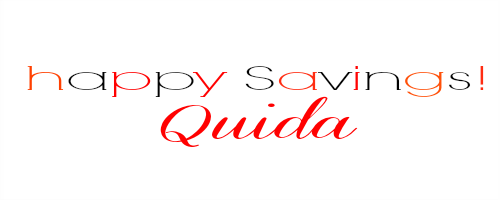to find coupons?
Everywhere!
Coupons are practically everywhere and I love it when I find a great
coupon. You can also find them in Sunday Newspaper inserts, stores
in blinkies {small red machines in the aisles of grocery stores}, on product
items as “peelies” {you can peel these right off the product and sometimes you
can use them immediately at checkout}, Friends, Neighbors, Peelies are
also found on display boards {can peel off the coupon and use immediately or on
your next trip}, Facebook {product company pages}, Ebay (be careful of fake
coupons), Insert wholesalers, In store sample displays, Sample products, online
at grocery/product websites, store websites, mail {Value Pak}, Catalinas-paper
coupons printed when you check out at the grocery store that you can use on the
next grocery trip. I have even found some great coupons in magazines
{Ebony, Better Homes & Garden, All You- sold only in Walmart, Food
magazines, etc.}. Take a look around your environment to see where you
can find coupons. You may just be surprised.
sell a great organizing system here at SSFAM. Go here to view this great system. Having your coupons cut and
in one entire location can be very helpful when you are in the store and see a
sale or clearance item and do not have to worry about going home to get the coupon
and come back to the store. You have all of your coupons right with you
and when you are planning your shopping trips, you can pull the coupons you do
want to use and place them in the front area of the coupon binder for easier
access. In addition, you can store other items in your coupon
binder. For example, store coupon policies, scissors, calculator, pens,
sticky notes, ipad, etc. A con to having a coupon binder is that
sometimes it can get heavy depending on how many coupons you have in it. When I
go on major shopping trips, I carry mine. You can see a picture of my red
beauty below. It is filled with all kinds of coupons that I need including my
business cards. It is a Case-It binder and has a very neat handle and shoulder
strap.
Free method ~ These
are great for storing your coupon inserts if you prefer to not clip your
coupons {get your inserts, write the date on the front and then file in an
accordion folder or hanging file folders and arrange by date or month}. I use this method mostly. If you are
considering a monthly filing method that I follow of monthly inserts for Red
Plum, Smart Source, P&G, General Mills, Kroger Mailers, Restaurants, this
may be a great method for you. A Con to this method is not having all of
your coupons with you during a shopping trip but you can keep your case in the
trunk of your car if you need it or just plan to have your coupons on your next
shopping trip.
method to use for quick trips to the grocery store or pharmacy and you have a
special time limit but want your coupons organized. It is also nice that
it can fit inside your purse or you can just hold it in your hand. These
are also for sale here at SSFAM.
you. If you have one method now that is not working, consider what your
needs are and maybe try something different. Whatever method you choose,
make sure it is one that gives you easy access to your coupons and can help
keep you organized during your shopping trips.
per price is the cost of an item per unit of measure. Simply put, foods are sold in units such as
pounds, ounces or pieces.
to calculate the unit per price, you can make sure that you are getting the
best deal at your grocery store. This
method is very helpful when you are comparing sizes of the same items. Sometimes a larger box of cookies may cost
more but per ounce is the better product value.
quick example:
Look for the
packaging size. Let’s use
a bag of flour that weighs 5 lbs and it costs $4.50.
Divide $4.50 (the price of the flour) by
5 (the unit in pounds). The unit pricing
is $0.90 per pound.
Compare the
products by
calculating the unit price of each which will help you determine which would be
a better buy. Example: you can buy a 20
oz. jar of strawberry jam for $3.50 or a 16 oz. jar for $2.50.
Divide $3.50 by 20 to determine that the
20 oz jar costs 18 cents per ounce of strawberry jam. Divide $2.50 by 16 to determine that the 16
oz. jar costs 15 cents per ounce of strawberry jam. The 16 oz. strawberry jam
is the better buy.
coupons have you chosen or already utilizing? Do you use the unit/price method when shopping for your groceries?






